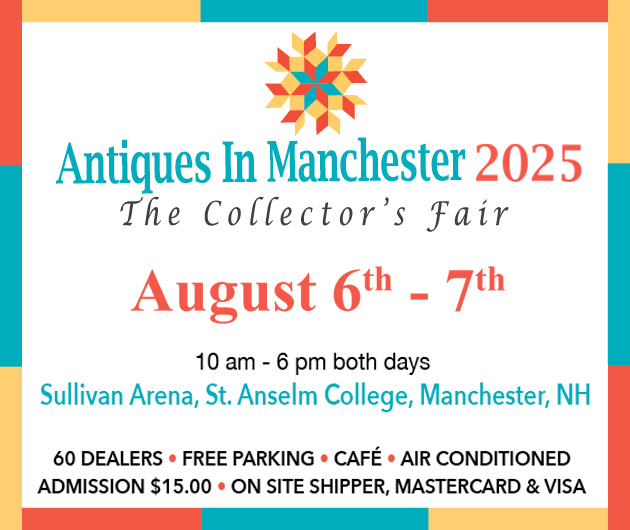Spitler Chest Achieves Record Price
June 20th, 2015
|
The high lot of the Evans sale was something of a foregone conclusion. The Johannes Spitler paint-decorated yellow pine blanket chest enjoyed pride of place in the salesroom and was the object of most of the presale conversation. The chest has a hinged rectangular lid with applied edge molding. The case is dovetailed with an applied ogee base with cutout bracket feet. The interior has a lidded till, and the original wrought-iron hinges are present. With the exception of two wrought-iron nails, the entire piece is fastened with wooden pins. The circa 1800 chest measures 23" x 47½" x 21¼". Spitler chests are known for their decoration rather than their casework. This chest is no exception. The front panel features three distinct images. The center incorporates two love birds perched atop a stylized tulip. On each side is a triple-bloom tulip form issuing from the tip of an inverted heart. The lobes of the heart figures contain orbs with vertical bars. The lid is decorated with a large central inverted heart with a crescent shape balanced above the tip and with an orb shape between. That decoration is flanked by similar, though smaller, elements. Bidding for the chest was spirited, opening at $110,000, and the chest ultimately realized $356,500 (est. $250,000/300,000). The winning bidder was an active collector from southern Virginia who asked to remain anonymous. For additional information on the Spitler chest, refer to the text of this report or the auction catalog.
This diminutive decorated salt-glazed stoneware cream pitcher is from the Zigler Pottery of Timberville, Virginia. The pitcher’s body features a high shoulder with a flared neck. The neck is decorated with an incised medial ring and beaded rim and with 16 brushed cobalt petal forms. The body decoration features an upright tulip form with a large leaf on each side. The one-pint capacity creamer dates to 1830-40 and stands 5¼" in overall height. The Zigler creamer brought $6325 (est. $2000/3000).
This salt-glazed jar was manufactured for Major Thomas Smith’s Airville Plantation in Gloucester County, Virginia. The circa 1835 ovoid jar is marked with a “1½” gallon capacity mark. The body is incised in script “Smith / Airville / Va.” The jar is decorated with a brushed cobalt floral motif, with additional cobalt at the handle terminals. The jar stands 11½" in overall height and is in fair as-found condition. The jar enjoyed spirited bidding among several bidders, ultimately selling for $4312.50 (est. $500/800). |
Jeffrey S. Evans & Associates, Mt. Crawford, Virginia
Photos courtesy Jeffrey S. Evans & Associates
On June 20 Jeffrey S. Evans & Associates held its semiannual auction of Americana, with an emphasis on items from Virginia and the South. We have grudgingly become accustomed to these single-day marathon sales with a catalog that usually approaches 1000 lots. This sale was no exception.
But even with nearly 1000 other contenders, the star of the sale was no secret. A Johannes Spitler paint-decorated yellow pine blanket chest, referred to as “The Long Family Spitler blanket chest,” was destined to lead the way. The only question was whether the chest would achieve its reserve. It is rare for Jeff Evans to indicate that there is a reserve on a particular piece, and there was significant discussion among those in attendance regarding the chest’s low estimate of $250,000. Any concern was quickly dispelled. The chest opened at $110,000, immediately moved beyond the low estimate, and was hammered down for $356,500 (includes buyer’s premium). The winning bidder was bidding for himself in the salesroom and asked that he be identified only as an active collector from southern Virginia.
The chest offered at the Evans sale displayed characteristic Spitler decorative devices: inverted heart forms, a love bird pair, and balanced crescents, tulips, and orbs. Other specific details of this chest are found in the accompanying photo caption.
Johannes Spitler and his paint-decorated pieces are well documented, and we will not go into his legacy here. Spitler
pieces are found in major institutional collections, including Colonial Williamsburg, the Museum of the Shenandoah Valley, and the Museum of Early Southern Decorative Arts (MESDA), as well as in many private collections.
One fact that sets this Spitler chest apart from other Spitler pieces was explained in the auction brochure. In it Jeff Evans stated: “To our knowledge this chest represents the last Spitler-decorated piece remaining in the family of the original owner. It [this chest] had never left the community where it was made until transported to our gallery earlier this year.”
Jeff Evans has now wielded the gavel on the two highest auction prices achieved for Spitler furniture. At Green Valley Auctions in 2004 he sold the Spitler-decorated hanging cupboard that achieved $962,500. (Readers who may wish to learn more about the Long family/Spitler-decorated chest should consult Jeff Evans’s catalog entry from this sale. It can be found on the company website. Search the “past auction catalogues” tab for the June 20 sale, pull up lot #492, grab a cup of coffee, and enjoy.)
While the Spitler chest clearly stood alone at the top of the sale, the Evans auction was very deep, with quality items across all categories.
The sale began with a run of 200 lots of stoneware and pottery. The category was led by a small cream pitcher from the Zigler Pottery of Timberville, Virginia. The little 5¼" high pitcher was cobalt decorated and achieved a price of $6325 (est. $2000/3000). A 6 5/8" high polychrome earthenware/redware pitcher attributed to one of the Strasburg, Virginia, potteries made $1035 against a $400/600 estimate; and a three-gallon capacity cobalt-decorated Maryland stoneware cooler estimated at $800/1200 sold for $1495. With few exceptions, the stoneware sold within its estimates.
As is usually the case, Civil War-era memorabilia sold well, although no blockbuster items were offered. One interesting run of ephemera did draw quite a bit of interest. That was a run of six lots related to the Union soldiers’ capture of Jefferson Davis and the report that he had disguised himself as a woman. Most of the items were photographic images that had been altered in the 19th century to depict Davis in various women’s outfits. The various lots sold in the $100 to $300 range.
Works on paper were another story altogether. A circa 1806 watercolor and ink birth record fraktur attributed to Jacob Strickler brought $29,900, more than double its high estimate. The fraktur is significant, especially in this sale, because Strickler had both family and artistic connections to Johannes Spitler, and the fraktur design sold at this Evans sale incorporated some of the design elements seen on the Long family Spitler chest. Specifically, Spitler’s inverted heart form is found throughout the Strickler fraktur.
Other fraktur examples, cut-paper silhouettes, drawings, and miniatures on paper were all well received.
As has been the case for some time, the furniture category proved to be a mixed bag. A child’s Shenandoah Valley Federal walnut blanket chest brought $2415 (est. $1000/1500); a large (71 5/8" diameter) Shenandoah Valley lazy Susan walnut dining table made $3105 (est. $800/2000); and a paint-decorated Pennsylvania Dutch cupboard made $12,650 (est. $3000/5000).
On the flip side, a very nice late Federal period cherry and bird’s-eye maple sideboard/server sold for $977.50, within estimates; a group of eight maple side chairs brought only $115 (est. $200/300); and a nice Virginia or Maryland Federal inlaid cherry and birch Pembroke table sold for $230 (est. $300/500).
 In addition to the record price achieved by the Spitler chest, another record is thought to have been achieved. A carved walking stick by Thomas Jefferson Craddock sold for $3737.50 (est. $300/500). We see quite a few Craddock-carved canes. All have a Thomas Jefferson or University of Virginia theme, with various figural designs and Jefferson-related dates and accomplishments carved into the walking sticks.
In addition to the record price achieved by the Spitler chest, another record is thought to have been achieved. A carved walking stick by Thomas Jefferson Craddock sold for $3737.50 (est. $300/500). We see quite a few Craddock-carved canes. All have a Thomas Jefferson or University of Virginia theme, with various figural designs and Jefferson-related dates and accomplishments carved into the walking sticks.
For additional information, contact Jeffrey S. Evans & Associates at (540) 434-3939 or visit the website (www.jeffreysevans.com).
|
|
|
|
|
|
|
|
|
|
|
|
|
|
|
|
|
|
|
|
|
|
|
|
Originally published in the September 2015 issue of Maine Antique Digest. © 2015 Maine Antique Digest







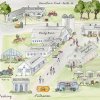
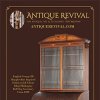
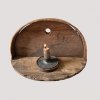



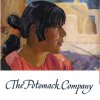

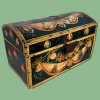

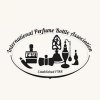


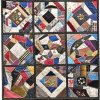
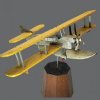







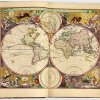
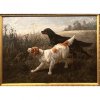



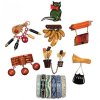






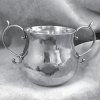
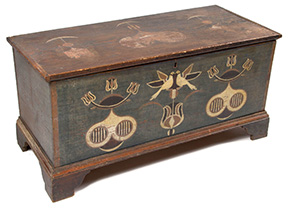
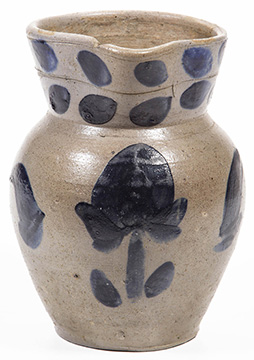
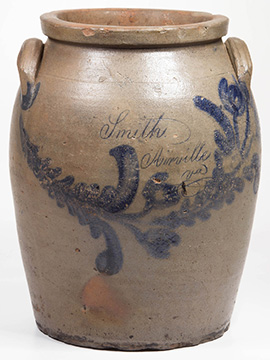
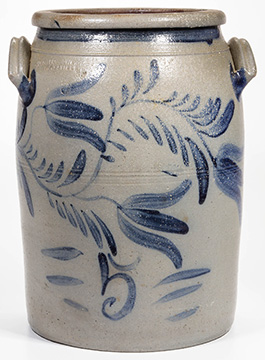 The merchant’s salt-glazed decorated stoneware jar is stamped “N. COOPER & POWER / MAYSVILLE/ KY.” The jar is marked with a brushed cobalt “5” gallon capacity mark. It is cylindrical, with a slight shoulder at the neck, and features an incised medial ring as well as a second ring above the handles. The front of the jar is decorated with a brushed cobalt design of a three-blossom flower. This circa 1860 merchant’s jar stands 15½" high and sold for $2760 (est. $500/800).
The merchant’s salt-glazed decorated stoneware jar is stamped “N. COOPER & POWER / MAYSVILLE/ KY.” The jar is marked with a brushed cobalt “5” gallon capacity mark. It is cylindrical, with a slight shoulder at the neck, and features an incised medial ring as well as a second ring above the handles. The front of the jar is decorated with a brushed cobalt design of a three-blossom flower. This circa 1860 merchant’s jar stands 15½" high and sold for $2760 (est. $500/800).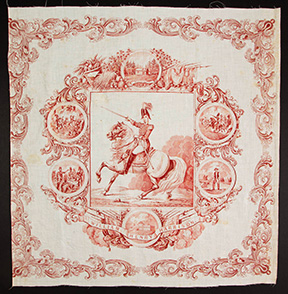 This William Henry Harrison (1773-1841) bandana is likely to have been associated with his presidential campaign in 1840. The central image on the bandana depicts Harrison in uniform with his sword drawn and on horseback. That image is surrounded by six vignettes illustrating noteworthy events and places associated with the future president’s life. The textile is approximately 26" square and is printed in various shades of red on white cotton. The circa 1840 bandana was won by an Internet bidder for $1092.50 (est. $100/200).
This William Henry Harrison (1773-1841) bandana is likely to have been associated with his presidential campaign in 1840. The central image on the bandana depicts Harrison in uniform with his sword drawn and on horseback. That image is surrounded by six vignettes illustrating noteworthy events and places associated with the future president’s life. The textile is approximately 26" square and is printed in various shades of red on white cotton. The circa 1840 bandana was won by an Internet bidder for $1092.50 (est. $100/200).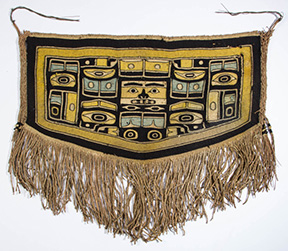 This Native American ceremonial Chilkat child’s blanket is attributed to one of the tribes of the Northwest Coast of Alaska or British Columbia. The Chilkat form of weaving produces a panel to which a border and fringe are attached. There is a central mask image that is flanked by a symmetrically balanced group of stylized symbols and naturalistic forms. The circa 1890 blanket measures 24" x 33" overall. It has significant wear and scattered losses, with fading and thread pulls. The catalog notes that this blanket was recently discovered in a Virginia attic. An Internet buyer won this Chilkat blanket for $10,350 (est. $5000/8000).
This Native American ceremonial Chilkat child’s blanket is attributed to one of the tribes of the Northwest Coast of Alaska or British Columbia. The Chilkat form of weaving produces a panel to which a border and fringe are attached. There is a central mask image that is flanked by a symmetrically balanced group of stylized symbols and naturalistic forms. The circa 1890 blanket measures 24" x 33" overall. It has significant wear and scattered losses, with fading and thread pulls. The catalog notes that this blanket was recently discovered in a Virginia attic. An Internet buyer won this Chilkat blanket for $10,350 (est. $5000/8000).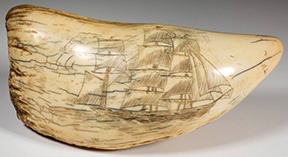 Whale’s tooth scrimshaw is one of the categories that falls within the murky world of today’s antiques market. Buyers did not appear to be concerned when this decorated example crossed the block. The 6½" long tooth is carved with a three-masted sailing ship and is signed and dated “J.M.T. / 1834.” The 19th-century tooth is in excellent condition with expected shrinkage and surface checking. This piece of scrimshaw brought $1265 (est. $100/200).
Whale’s tooth scrimshaw is one of the categories that falls within the murky world of today’s antiques market. Buyers did not appear to be concerned when this decorated example crossed the block. The 6½" long tooth is carved with a three-masted sailing ship and is signed and dated “J.M.T. / 1834.” The 19th-century tooth is in excellent condition with expected shrinkage and surface checking. This piece of scrimshaw brought $1265 (est. $100/200).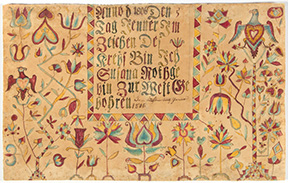 Aside from the decorated Spitler chest, the folk art category was dominated by several works on paper. This baptismal certificate fraktur is dated 1806 and documents the baptism of Susanna Rothgeb of Rockbridge County in Virginia’s Shenandoah Valley. The fraktur is attributed to Jacob Strickler. It is rendered in watercolor and ink with outstanding color and imagery. There are two spread-wing eagles with heart-shaped breast medallions. Other images are tulips, hearts, vines, and other floral elements. The baptismal inscription features a polychrome sawtooth border decoration. That sawtooth pattern is repeated as tree branches elsewhere in the field. The fraktur measures 7 5/8" x 12¼" and is in good overall condition, having had some professional restoration. The Strickler fraktur was purchased by a Virginia collector, bidding in the room, for $29,900 (est. $8000/12,000).
Aside from the decorated Spitler chest, the folk art category was dominated by several works on paper. This baptismal certificate fraktur is dated 1806 and documents the baptism of Susanna Rothgeb of Rockbridge County in Virginia’s Shenandoah Valley. The fraktur is attributed to Jacob Strickler. It is rendered in watercolor and ink with outstanding color and imagery. There are two spread-wing eagles with heart-shaped breast medallions. Other images are tulips, hearts, vines, and other floral elements. The baptismal inscription features a polychrome sawtooth border decoration. That sawtooth pattern is repeated as tree branches elsewhere in the field. The fraktur measures 7 5/8" x 12¼" and is in good overall condition, having had some professional restoration. The Strickler fraktur was purchased by a Virginia collector, bidding in the room, for $29,900 (est. $8000/12,000).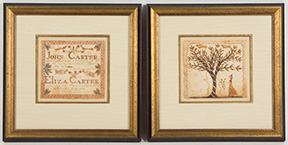 An enthusiastic and determined Washington, D.C., collector was the winning bidder of this lot consisting of six (two shown) birth records and other images by the unidentified folk art/fraktur artist referred to as the “record book” artist. These examples all date from the first quarter of the 19th century and are likely all associated with the Carter family of Frederick County, Virginia. The group consists of three name sheets, each with the names of two individuals in the Carter family and inscribed with information related to the individuals. The other three sheets are pictorial: one depicts a group of birds, one shows a large building with numerous Masonic symbols, and one shows a young woman beside a tree holding a sprig of leaves with berries. The catalog notes that the image of the young woman is the only known example of a human figure in the artist’s known work. The collector bought this lot for $21,850 (est. $8000/12,000).
An enthusiastic and determined Washington, D.C., collector was the winning bidder of this lot consisting of six (two shown) birth records and other images by the unidentified folk art/fraktur artist referred to as the “record book” artist. These examples all date from the first quarter of the 19th century and are likely all associated with the Carter family of Frederick County, Virginia. The group consists of three name sheets, each with the names of two individuals in the Carter family and inscribed with information related to the individuals. The other three sheets are pictorial: one depicts a group of birds, one shows a large building with numerous Masonic symbols, and one shows a young woman beside a tree holding a sprig of leaves with berries. The catalog notes that the image of the young woman is the only known example of a human figure in the artist’s known work. The collector bought this lot for $21,850 (est. $8000/12,000).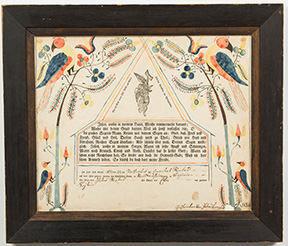 This fraktur represents the combination of freehand artistry and the artistry of a commercial printer. The document is a combination house blessing and birth record related to Emanuel Rolar of Rockingham County, Virginia. The base is preprinted paper with the image of an angel as well as a house blessing in German printed by Ambrose Henkel of New Market, Virginia. To that noted fraktur artist Peter Bern-
This fraktur represents the combination of freehand artistry and the artistry of a commercial printer. The document is a combination house blessing and birth record related to Emanuel Rolar of Rockingham County, Virginia. The base is preprinted paper with the image of an angel as well as a house blessing in German printed by Ambrose Henkel of New Market, Virginia. To that noted fraktur artist Peter Bern-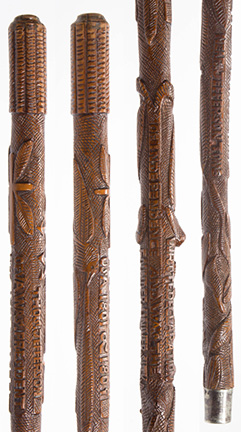 Thomas Jefferson Craddock (b. 1845) of Albemarle County, Virginia, was a prolific carver of walking sticks featuring themes associated with the University of Virginia and Thomas Jefferson, after whom he was named. This cane is carved from maple and features a handle carved as an ear of corn, with various leaf forms and Jefferson-related inscriptions below. The 34¼" long cane is fitted with a metal ferrule and dates from the fourth quarter of the 19th century. This Craddock cane sold for $3737.50 (est. $300/500), which is thought to be an auction record for this carver.
Thomas Jefferson Craddock (b. 1845) of Albemarle County, Virginia, was a prolific carver of walking sticks featuring themes associated with the University of Virginia and Thomas Jefferson, after whom he was named. This cane is carved from maple and features a handle carved as an ear of corn, with various leaf forms and Jefferson-related inscriptions below. The 34¼" long cane is fitted with a metal ferrule and dates from the fourth quarter of the 19th century. This Craddock cane sold for $3737.50 (est. $300/500), which is thought to be an auction record for this carver.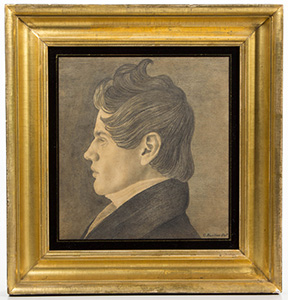 This pencil and charcoal profile portrait of a young man is by Charles Burton (1782-after 1847). The portrait is signed “C. Burton Del” lower right and is identified in pencil on the reverse “John B. Nicklin’s Profile / taken 18 Sept. 1822 / By Mr. C. Burton in Charlestown / Jeff Co Va. / Age Nineteen” [Jefferson County is now in West Virginia]. Charles Burton was an active portrait painter who worked in New York City as well as in metropolitan areas of the mid-Atlantic. His works are part of several museum collections. This example of Burton’s talent sold for $5462.50 (est. $2000/3000).
This pencil and charcoal profile portrait of a young man is by Charles Burton (1782-after 1847). The portrait is signed “C. Burton Del” lower right and is identified in pencil on the reverse “John B. Nicklin’s Profile / taken 18 Sept. 1822 / By Mr. C. Burton in Charlestown / Jeff Co Va. / Age Nineteen” [Jefferson County is now in West Virginia]. Charles Burton was an active portrait painter who worked in New York City as well as in metropolitan areas of the mid-Atlantic. His works are part of several museum collections. This example of Burton’s talent sold for $5462.50 (est. $2000/3000).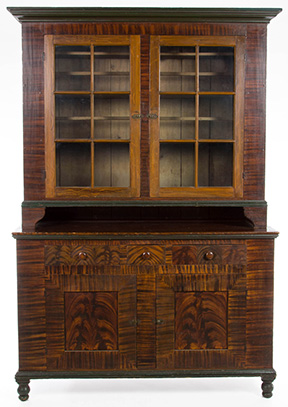 This two-piece Pennsylvania Dutch paint-decorated cupboard is constructed of poplar. The surface displays bold two-tone grain painting probably meant to resemble mahogany. The ogee-molded cornice is painted dark green as are the edges of the lower shelf molding of the upper case, a decorative molding strip below the top of the base cabinet, the lower case base molding, and the feet. The upper case features two six-pane doors and a lower pie shelf. The lower case displays two fielded-paned doors. The entire piece is raised on turned feet. The interior of the top section is unpainted and displays spoon slots, as well as plate rails and a mug shelf. The cupboard dates from the second quarter of the 19th century and measures 83" x 56" x 18½". A telephone bidder won this cupboard for $12,650 (est. $3000/5000).
This two-piece Pennsylvania Dutch paint-decorated cupboard is constructed of poplar. The surface displays bold two-tone grain painting probably meant to resemble mahogany. The ogee-molded cornice is painted dark green as are the edges of the lower shelf molding of the upper case, a decorative molding strip below the top of the base cabinet, the lower case base molding, and the feet. The upper case features two six-pane doors and a lower pie shelf. The lower case displays two fielded-paned doors. The entire piece is raised on turned feet. The interior of the top section is unpainted and displays spoon slots, as well as plate rails and a mug shelf. The cupboard dates from the second quarter of the 19th century and measures 83" x 56" x 18½". A telephone bidder won this cupboard for $12,650 (est. $3000/5000). This Regency four-pedestal, 134" long mahogany banquet table dates to 1810-20. Each section exhibits a finely grained and bookmatched one-board tilt top with a reeded edge. The pedestals are baluster form with downward-swept reeded legs fitted with brass paw-form feet on rollers. The table is in overall excellent condition, with an old refinished surface and with strengthening to one of the sections. The table sold to an Internet bidder for $9200 (est. $2000/3000).
This Regency four-pedestal, 134" long mahogany banquet table dates to 1810-20. Each section exhibits a finely grained and bookmatched one-board tilt top with a reeded edge. The pedestals are baluster form with downward-swept reeded legs fitted with brass paw-form feet on rollers. The table is in overall excellent condition, with an old refinished surface and with strengthening to one of the sections. The table sold to an Internet bidder for $9200 (est. $2000/3000).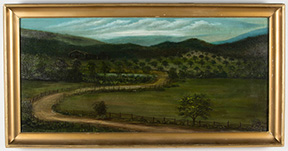 They say that all you need for an auction is two people who really want the same thing. This landscape became the object of a bidding duel between two determined Internet participants. The folky oil on canvas depicts a mountain farm with a dirt road winding its way through a pasture and orchard, past a pond, and on toward a log cabin. The painting dates from the late 19th or early 20th century and is thought to depict a scene in Wythe County, Virginia. The image measures 16¼" x 35½" and is signed “Miller” lower right. The painting was ultimately won by one of the Internet buyers with a connection to the depicted area. The final price was $9200 (est. $300/500).
They say that all you need for an auction is two people who really want the same thing. This landscape became the object of a bidding duel between two determined Internet participants. The folky oil on canvas depicts a mountain farm with a dirt road winding its way through a pasture and orchard, past a pond, and on toward a log cabin. The painting dates from the late 19th or early 20th century and is thought to depict a scene in Wythe County, Virginia. The image measures 16¼" x 35½" and is signed “Miller” lower right. The painting was ultimately won by one of the Internet buyers with a connection to the depicted area. The final price was $9200 (est. $300/500).

